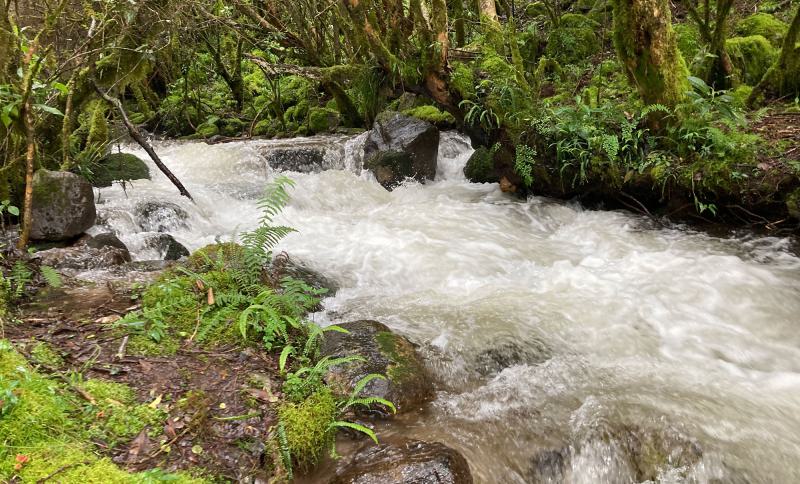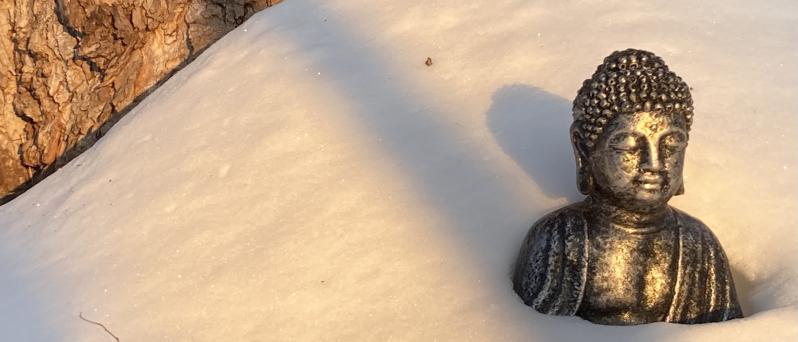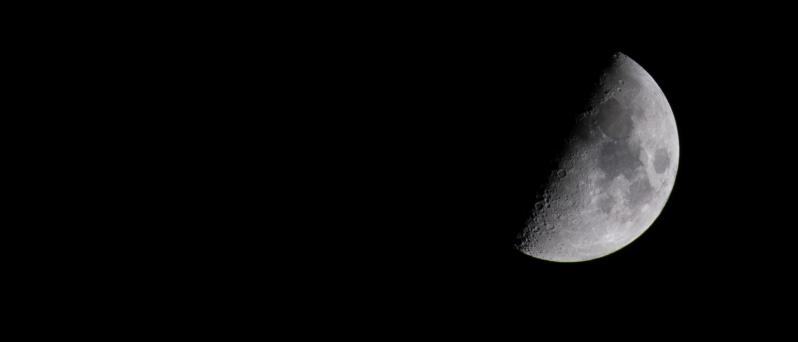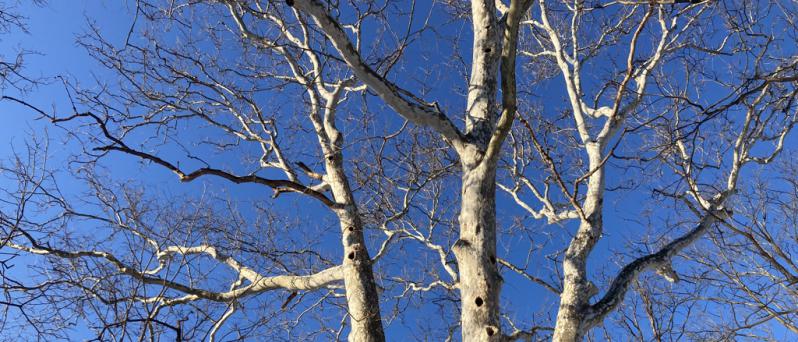
The exquisite stretch of silence penetrated every step as we climbed higher into the Andes. It was Day 6 of our retreat—a day of silence—and our ragtag group of roughly 25 westerners were climbing together toward the Chupani ruins, an ancient temple of priestesses that dates back to the Inca empire. My mind was quiet, offering a respite from the usual unending waves of thought. I’d had this experience previously while on an extended retreat, and though I didn’t expect it, I was grateful for its arrival.
My attention was on my breath, and its slow, undulating flow. Yet in the spaciousness of a mind that was no longer generating a thoughtstream, I was also able to cultivate other intentions. One of those was to listen for the voice of Pachamama—the Inca spirit of Mother Nature—for who we had been making offerings all week during the retreat. Though these types of offerings were a new experience for me, they were resonating deeply, even guiding and forming my nightly dreamscape.
Connecting personally with the spirit of nature was not entirely foreign to me, however. As a child, I spent long hours laying the grass and staring at the sky, climbing trees, and playing in nearby caves and streams. Nature was experiential, not conceptual, and the plaintive call I heard from the wind as a young teenager still catches my breath: “Listen, listen, listen to me, why are you blocking me out?”
The retreat was inviting me to open my mind and heart back up to that voice I’d forgotten so long ago. And step by slow step, breath by quickening breath, I listened. Until I heard its response, flowing through me with a penetrating clarity: "Do you work! It is time. I have nothing else to offer you right now. I’ve given you all that you need."
Tears wet my cheeks as I walked, knowing with all my being that this message was not for me. It is for all of us. We have everything we need. We are inhabiting a garden of abundance yet believing we are on moored on an island of scarcity. Maybe you have felt the penetrating clarity of this insight as well—perhaps in a moment of profound connection with nature. Years ago, while teaching meditation to college students, I remember how often they would describe a moment in their lives when thoughts disappeared and they could just rest in silence. Inevitably those moments arrived while experiencing some kind of communion with nature—the ripening of the clouds and darkening shadows as the sun sets over a valley, or sitting by a still pond in the moonlight and listening to the crickets and frogs. It’s as if our minds evolved to rest in nature’s resplendence, whose message to us is simply “I’ve got you. All is well. You are not alone.”

In The More Beautiful World Our Hearts Know is Possible, Charles Eisenstein describes this shift as moving from the “Story of Separation” into the “Story of Interbeing.” Intuitively, I think many of us know the truth of this clarion call. We feel it with an increasing sense of urgency, and an ever-growing sorrow at our ongoing inability to inhabit what we know to be true. We are like the proverbial frogs, relaxing in a warm bath on the stove even though we know that the flames will eventually bring the water to a boil. What’s worse, even though we see that, many of us feel trapped, even enslaved, by the habits of our mind and our inability to create lasting change.
There is an inevitable shift that begins to take place in the closing days of a retreat, when our minds and hearts begin to prepare for the transition back to the “real world.” In my own experience, no matter how powerful the transformation I feel on a retreat, the reality I was “retreating from” inevitably returns, and sometimes with a vengeance. “If you think you’re enlightened,” quipped Ram Das, “go spend a week with your family.” Looking back, I can now see that this is precisely why I received the message from Pachamama about the urgency of “doing my work.” While on retreat, we can lean on the structure of the format, the teachers who inspire, the team that is holding space, and often, the beauty of both the built and natural environments. When we return to our lives, we are inhabiting the structures of our existing experience, while also trying to integrate the teachings from our retreat. Too often, I think, we lose hope and our experience of life returns with little fanfare or transformation. In the face of humanity’s dire predicament, how could we not despair as we feel the possibility of change slipping away yet again?
For the past few years I’ve been playing with a framework that is helping me immensely in my own journey to keep hope alive. I often think of it is a balance of structure, thought and practice, or in a more traditional sense, the interplay between body, mind and spirit. The three aspects of my experience are not only in a constant state of flux, but also seem to be in a dynamic exchange such that shifting one supports (or weakens) another.
For example, if I return to my recent experience of being on retreat, I can see that I was receiving an incredible amount of support for all three of these aspects of my experience. In terms of structure (the body), I had a beautiful room set by a backdrop of the Andes (see image below). We had three incredible meals a day, prepared by a talented chef with high quality, organic and local ingredients. I didn’t have to carry any money during my time, as all our needs were cared for. In terms of my thoughts (mind), I was learning wisdom from indigenous traditions that span back thousands of years. I was being given practical advice and insight into the nature of my thought patterns, and suggestions about how to shift those in new directions. I was meeting interesting people, and enjoying meals while having heart-centered conversations. And on the level of practice (spirit), I was participating in ancient rituals that celebrate Pachamama’s abundance, as well as traditional Buddhist forms and teachings that support shifting my consciousness from the head down into the heart.

Back in the “real world”, it’s easy to see that there are far fewer support structures in my life. I have bills to pay, a job to work, errands to run, resentments to harbor, outrage to stoke. These are the structures of modern day society, and most of us are no strangers to them. Yet we feel trapped, and therefore hopeless. Too often, we simply resign ourselves to either cynicism or nihilism, and sequester the more beautiful world our hearts know is possible to the same space where we locked away our childhood dreams and youthful optimism.
If we imagine for a moment, however, that not only is real change possible, but that it’s actually the only thing the really makes sense: where does that leave us? I often try to remember the quote from Vaclav Havel, that “Hope is not the conviction that something will turn out well, but the certainty that something makes sense, regardless of how it turns out.” Feeling the penetrating truth of that statement forces me to ask myself: what do I believe in strongly enough that I’m willing to do it regardless of how it turns out?
I’ve been sincerely pondering this question for the past few years, and over time it became abundantly clear that simply changing my thought patterns and practices (mind and spirit) were not going to lead to the outcomes I was seeking. I needed to change the outer structures of my life as well. Specifically, I began to see that I was caught in a vicious cycle of needing to work longer hours to make more money to service the debts I’d taken out in order to support the exact lifestyle I now desperately wanted to change. It's a familiar Catch-22.
If we fast forward two years, however, many of the changes I wanted and needed to make are now in my rear-view mirror. My trip to Peru, and the incredible retreat I described above, was a gift I gave to myself as I completed the first part of transforming the structures of my life. In Part 2, I'll describe in greater detail how that process unfolded, the changes that it required, the gifts it's offered and why Pachamama's message on the hike felt so penetrating.


